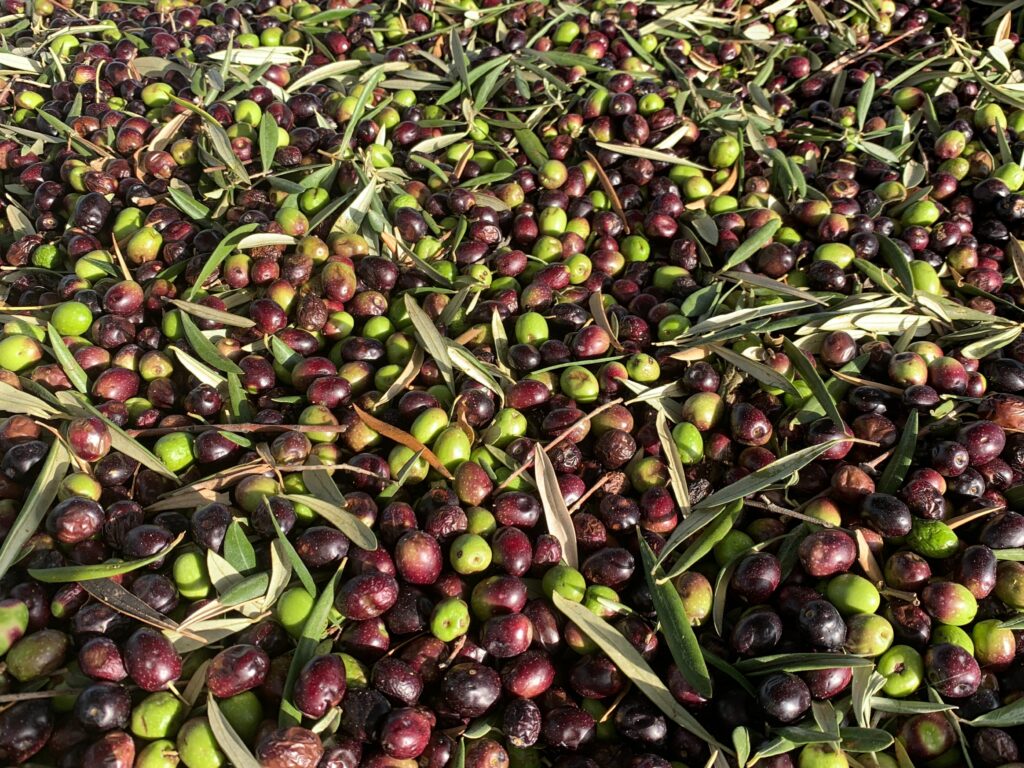Date of the last update: 14.03.2023
Table of contents:
- Palm Oil: What is it, and why do we hear so much about it?
- Palm Oil and Health: Friend of foe?
- Palm Oil and the Environment
- Palm Oil Alternatives
- Conclusions
You can read this article in 4 minutes.
Palm Oil: What is it, and why do we hear so much about it?
As trans fats have been banned by an increasing number of countries, food manufacturers have rushed to find alternatives. Palm oil – extracted from the fruit of the African oil palm tree – was found to be a cheap and highly versatile oil, leading to a huge increase in its production and consumption in recent decades. It is now produced extensively in the tropical regions of Asia, South America, and Africa, and used in a variety of processed foods ranging from bread, biscuits, chips, peanut butter, ice cream, packaged liquids such as soups and sauces, and even cosmetics such as soap, lipstick, deodorant, toothpaste, and detergents.
One of the reasons palm oil has become such a popular option for food producers is its productive yield, as the oil palm offers larger quantities of oil at a far lower cost than other vegetable oils. However, the increase in palm oil consumption has been accompanied by an increase in heated controversial debate over its health and environmental impacts.
Palm Oil and Health: Friend of foe?

Most research considers palm oil to be less healthy than other vegetable oils due to its high levels of saturated fat, which can increase LDL ‘bad’ cholesterol, and can thus contribute to heart disease. However, contrasting studies argue that palm oil does not contribute to cardiovascular problems, and is in fact high in vitamin E – a powerful antioxidant – and supports the absorption of vitamin A.
In response to the ambiguity of contrasting studies, the authors of a 2019 World Health Organization bulletin conclude that “The contested nature of the evidence suggests the need for independent, comprehensive studies of the health impact of palm oil consumption”.
Whilst the health impacts of palm oil remain unclear, in an op-ed published in Harvard Health Publishing, Celeste Robb-Nicholson highlights that the higher the saturated fat content of an oil, the more solid the oil is at room temperature. Palm oil is semisolid at room temperature, and although palm oil doesn’t contain trans fats, she recommends opting for oils that remain liquid at room temperature. The most nutrient-rich alternatives to palm oil will be shared below.
You may also be interested in: Introduce healthy eating habits
Palm Oil and the Environment
While there are arguments both for and against palm oil in terms of its health properties, there is total consensus on the significant environmental damage caused by palm oil production, which is the leading cause for many consumers to avoid products containing this oil. According to the World Wildlife Fund (WWF), “Large areas of tropical forests and other ecosystems with high conservation values have been cleared to make room for vast monoculture oil palm plantations. This clearing has destroyed critical habitat for many endangered species—including rhinos, elephants and tigers. Burning forests to make room for the crop is also a major source of greenhouse gas emissions. Intensive cultivation methods result in soil pollution and erosion and water contamination.” This argument is barely refuted in environmental science research. Palm oil is one of the leading crops in agricultural deforestation, and for this reason alone, we should be finding alternatives.
The WWF estimates that 85% of global palm oil supply comes from Indonesia and Malaysia – causing significant losses to their ancient rainforests – although 42 countries across the tropics produce and export the oil.
Palm Oil Alternatives

After reviewing multiple articles on the relative benefits of different cooking oils, it is clear that olive oil is almost always cited as the best choice for its nutritional benefits. Olive oil – especially extra virgin – is rich in monounsaturated fats which can help reduce inflammation and cholesterol, and lower blood pressure, thus contributing to cardiovascular health.
Another cooking oil rich in monounsaturated fats is avocado oil, and with its neutral flavour, it is another good alternative to palm oil.
Conclusions
Choosing the best oil for you is a very personal decision. It is clear that palm oil doesn’t fit into an environment-friendly diet, and its health benefits also remain in question, so the only true benefit of palm oil to both manufacturers and consumers is its price. Each of us must make our own choice in alignment with our values and priorities.
Explore more: Sugar, Salt and Fat: How to Stop Being a Glutton?
Sources:
- Baum, E. (2022). ‘Is Palm Oil Bad for You?’ Health.com.
- Boyers, L. (2022). ‘Is Palm Oil Bad For You? Nutrition Facts, Sustainability & How It Compares To Other Oils’ MindBodyGreen.
- Kadandale et al., (2019). ‘The palm oil industry and noncommunicable diseases’. The World Health Organization bulletin.
- Ritschel, C. (2020). ‘The reasons why palm oil is so controversial’. The Independent.
- Robb-Nicholson, C. (2021). ‘By the way, doctor: Is palm oil good for you?’ Harvard Health Publishing.
- World Wildlife Fund (n/d). ‘Palm Oil: Overview’. World Wildlife Fund.

